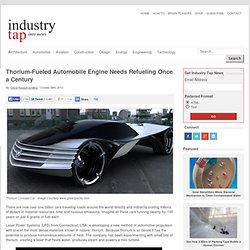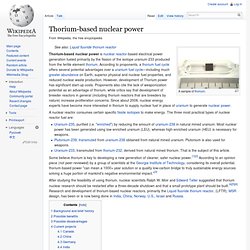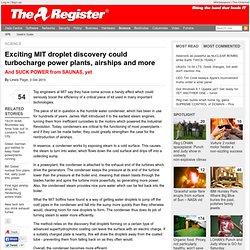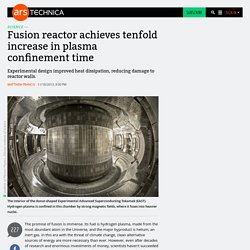

NASA’s cold fusion tech could put a nuclear reactor in every home, car, and plane. The cold fusion dream lives on: NASA is developing cheap, clean, low-energy nuclear reaction (LENR) technology that could eventually see cars, planes, and homes powered by small, safe nuclear reactors.

When we think of nuclear power, there are usually just two options: fission and fusion. Fission, which creates huge amounts of heat by splitting larger atoms into smaller atoms, is what currently powers every nuclear reactor on Earth. Fusion is the opposite, creating vast amounts of energy by fusing atoms of hydrogen together, but we’re still many years away from large-scale, commercial fusion reactors. (See: 500MW from half a gram of hydrogen: The hunt for fusion power heats up.) LENR is absolutely nothing like either fission or fusion.
The key to LENR’s cleanliness and safety seems to be the slow-moving neutrons. According to NASA, 1% of the world’s nickel production could meet the world’s energy needs, at a quarter of the cost of coal. So why don’t we have LENR reactors yet? The Future of Nuclear Power Runs on the Waste of Our Nuclear Past. Thorium-Fueled Automobile Engine Needs Refueling Once a Century - Industry Tap. By: David Russell Schilling | October 28th, 2013 Thorium Concept Car - Image Courtesy www.greenpacks.com There are now over one billion cars traveling roads around the world directly and indirectly costing trillions of dollars in material resources, time and noxious emissions.

Imagine all these cars running cleanly for 100 years on just 8 grams of fuel each. Laser Power Systems (LPS) from Connecticut, USA, is developing a new method of automotive propulsion with one of the most dense materials known in nature: thorium. Because thorium is so dense it has the potential to produce tremendous amounts of heat. Cadillac World Thorium Fuel Concept (Image Courtesy www.cutedesign.com) Current models of the engine weigh 500 pounds, easily fitting into the engine area of a conventionally-designed vehicle. The idea of using thorium is not new.
According to Robert Hargraves, “low or non-CO2 emitting energy sources must be cheaper than coal or will ultimately fail to displace fossil fuels.” Thorium-based nuclear power. Thorium-based nuclear power is nuclear reactor-based electrical power generation fueled primarily by the fission of the isotope uranium-233 produced from the fertile element thorium.

According to proponents, a thorium fuel cycle offers several potential advantages over a uranium fuel cycle—including much greater abundance on Earth, superior physical and nuclear fuel properties, and reduced nuclear waste production. However, development of Thorium power has significant start-up costs. Proponents also cite the lack of weaponization potential as an advantage of thorium, while critics say that development of breeder reactors in general (including thorium reactors that are breeders by nature) increase proliferation concerns.
Since about 2008, nuclear energy experts have become more interested in thorium to supply nuclear fuel in place of uranium to generate nuclear power. A nuclear reactor consumes certain specific fissile isotopes to make energy. Uranium-235, purified (i.e. Exciting MIT droplet discovery could turbocharge power plants, airships and more. Top engineers at MIT say they have come across a handy effect which could seriously boost the efficiency of a critical piece of kit used in many important technologies.

The piece of kit in question is the humble water condenser, which has been in use for hundreds of years: James Watt introduced it to the earliest steam engines, turning them from inefficient curiosities to the motors which powered the Industrial Revolution. Today, condensers are critical to the functioning of most powerplants - and if they can be made better, they could greatly strengthen the case for the reintroduction of airships. In essence, a condenser works by exposing steam to a cold surface. This causes the steam to turn into water, which flows down the cold surface and drips off into a collecting sump. In a powerplant, the condenser is attached to the exhaust end of the turbines which drive the generators.
Overall, the condenser becomes more efficient. But what's the airship angle? There's more from MIT here Bootnote. Fusion reactor achieves tenfold increase in plasma confinement time. The promise of fusion is immense.

Its fuel is hydrogen plasma, made from the most abundant atom in the Universe, and the major byproduct is helium, an inert gas. In this era with the threat of climate change, clean alternative sources of energy are more necessary than ever. However, even after decades of research and enormous investments of money, scientists haven't succeeded in producing a working nuclear fusion plant. Nevertheless, many feel the potential payoff is worth continued investment. For that reason, work is proceeding apace on the next generation of fusion reactors. Your Guide To Understanding Energy. Department of Energy. OriginOil: A Breakthrough Technology for the Oil and Algae Industries. Bluerise - Harnessing the ocean's power.